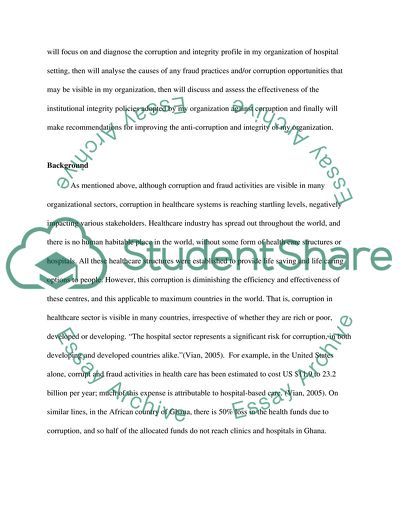Cite this document
(“Anti-Corruption and Integrity at a Hospital Research Paper - 1”, n.d.)
Anti-Corruption and Integrity at a Hospital Research Paper - 1. Retrieved from https://studentshare.org/social-science/1752220-anti-corruption-and-integrity-at-a-hospital
Anti-Corruption and Integrity at a Hospital Research Paper - 1. Retrieved from https://studentshare.org/social-science/1752220-anti-corruption-and-integrity-at-a-hospital
(Anti-Corruption and Integrity at a Hospital Research Paper - 1)
Anti-Corruption and Integrity at a Hospital Research Paper - 1. https://studentshare.org/social-science/1752220-anti-corruption-and-integrity-at-a-hospital.
Anti-Corruption and Integrity at a Hospital Research Paper - 1. https://studentshare.org/social-science/1752220-anti-corruption-and-integrity-at-a-hospital.
“Anti-Corruption and Integrity at a Hospital Research Paper - 1”, n.d. https://studentshare.org/social-science/1752220-anti-corruption-and-integrity-at-a-hospital.


